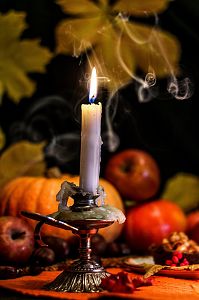Samhain vs. Halloween: Celebrating Both the Sacred and the Secular

Introduction
As October 31st approaches, many people eagerly anticipate Halloween festivities like trick-or-treating, costumes, and pumpkin carving. However, for those who follow pagan or Wiccan traditions, this date also marks Samhain, a sacred festival. Striking a balance between the fun of Halloween and the spiritual significance of Samhain can be challenging, but it's entirely possible with some thoughtful planning. In this article, we'll explore ways to honor both the sacred and the secular aspects of this time of year.
The Origins
While Halloween has its roots in the ancient Celtic festival of Samhain, it has evolved over the years into a largely secular celebration. Samhain, on the other hand, is lesser-known but remains a deeply spiritual occasion for pagans and Wiccans. It marks the end of the harvest season and serves as a time to honor ancestors.
Dual Celebrations
Celebrating both Halloween and Samhain is not only possible but can also be incredibly meaningful. For example, you could go trick-or-treating with your kids in the early evening and hold a Samhain ritual later at night. The key is to set aside time for both the fun and the sacred aspects of the day.
Symbolic Connections
Many Halloween traditions have their origins in Samhain practices. For instance, the act of carving pumpkins stems from the Celtic custom of carving turnips to ward off evil spirits. Similarly, costumes were originally worn to confuse malevolent spirits. Another tradition that links Halloween and Samhain is the use of fire. Bonfires were a significant part of Samhain celebrations, believed to have protective and cleansing powers. Another favorite at Halloween parties, the practice of "bobbing for apples," also has its roots in Samhain as a form of divination to predict future relationships. Understanding the historical roots of these traditions can deepen your experience of both Halloween and Samhain.

Family Involvement
Involving your children in both Halloween and Samhain activities can be a rewarding experience. For Halloween, the focus could be on costumes and candy, while for Samhain, you might create a small ancestor altar together or share stories of family members who have passed on. This dual approach educates them about your spiritual beliefs while also allowing them to enjoy the fun aspects of the holiday.
Conclusion
Samhain and Halloween may serve different purposes, but they are not mutually exclusive. By understanding the historical and spiritual connections between the two, and by incorporating elements of both into your celebrations, you can honor the sacred while also enjoying the secular aspects of October 31st.
Share on: